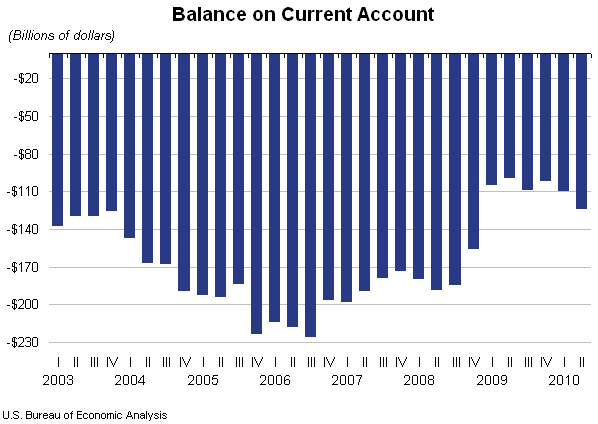Have governments everywhere simply lost their marbles? Not much emerged from the Seoul G-20 Summit — and definitely not anything really desirable in the form of coordinated Global Keynesian policies (of the kind that Matías Vernengo has advocated in the TripleCrisis blog). But then, quite frankly, not much was really expected to come out, given the downplaying of expectations and the volume of discordant notes that preceded the Summit.
This reflects the absence of a global economic leader willing and able to fulfill the roles identified by Charles Kindleberger: discounting in crisis; countercyclical lending to countries affected by private investors’ decisions; and providing a market for net exports of the rest of the world, especially those countries requiring it to repay debt. For obvious reasons, the US cannot currently do these, and there is no evident alternative. That is why coordination is so critical right now for international capitalism.
But that is not the only problem, because of the general confusion about how economic growth occurs, or even why societies want growth in the first place. Governments seem caught between the (often self-imposed) rock of fiscal consolidation created by the hysteria of bond market vigilantes and the financial media, and the hard place created by the unwillingness to give up what is clearly an outdated growth model. As a result, we are faced with the worst of all economic outcomes in terms of socially fraught stagnation in the North and ecologically destructive and fragile expansion in the South, with workers everywhere getting even worse off than before.
Let’s get a few things straight. There are three major imbalances that continue to characterize the global economy: the imbalance between finance and the real economy; the macroeconomic imbalances between major economies; and the ecological imbalance created by the pattern of economic growth. While these are obviously unsustainable, the very process of their correction will necessarily have adverse effects on current growth trajectories.
Curiously, the governments of the major economies in the global system do not seem to have grasped this. Let us consider only the second imbalance — that of large current account surpluses and deficits among major economies — since this is the one that has got the most political attention in recent times. The surplus countries that hold large US dollar reserves demand that the US reduce its external deficit. But then they don’t seem to like the strategies that would lead to such a reduction.
Consider the German position. On the one hand, the Germans want the US to reduce their external imbalance, which they have decided is a cause of many problems. Yet when the US Federal Reserve announces a policy of buying long-term bonds in order to provide more liquidity in the market, they rail against this strategy of bringing down the external value of the dollar. But surely such depreciation is one of the routes to greater “competitiveness” and achieving the trade balance that the Germans supposedly value?
Similarly, the Germans want the US to join them and other European countries in focusing on fiscal consolidation immediately. But it is more than evident that this is a fragile recovery. If the private sector has to continue to wind down its excessive debt, which it is already doing, then the slack has to be taken up by the government or exports. Otherwise the US economy will not grow, and this will also affect demand for German exports.
The same wrongheaded argument is also being applied by Germany on the peripheral European economies, without adequate consideration of the obvious negative implications for the German growth model. If the deficit countries are forced to start generating surpluses, they are likely to do so under conditions of severe economic contraction, as is already evident in Ireland and Greece. How could such contraction not transmit a negative stimulus to its trading partners through drastically reduced imports?
The US government provided an equally peculiar response to the issue of global imbalances: capping external surpluses or deficits as a proportion of GDP. Quite apart from how on earth such a thing could possibly be done, this is a false notion of balance. If capital flows finance current deficits in a stable fashion, there is no “natural” limit on them. The US economy, after all, ran current account deficits of more than 5 per cent of GDP for the most of the latter part of the 19th century, financed by capital flows from Britain.
 |
The rather obvious point that all countries cannot use net export growth as the route to expansion does not seem to have been understood, so all governments think they can export their way out of trouble. This will have inevitable implications for trade and currency wars and the likelihood of global economic stagnation. As it happens, the US current account deficit is already under correction: the current account deficit in 2009 was just above half its 2008 level, and the data for this year suggests that it will stay at around that level. For the rest of the world, it does not really matter whether the reduction occurs through currency movements or trade protectionism or domestic economic contraction: the point is that some other engine of growth has to be found.
Fortunately, this is actually not so difficult. Internationally, meaningful measures to enable sustained expansion of demand from low-income countries can provide an equitable way out of this global dilemma. Within countries, domestic wage-led growth can prove to be a massive engine of expansion. But first our leaders have to get over their export obsession.
Jayati Ghosh is Professor, Centre for Economic Studies and Planning, School of Social Sciences, Jawaharlal Nehru University, New Delhi, and Executive Secretary of International Development Economics Associates (IDEAs). This article was first published in TripleCrisis on 17 November 2010; it is reproduced here for non-profit educational purposes.
| Print
